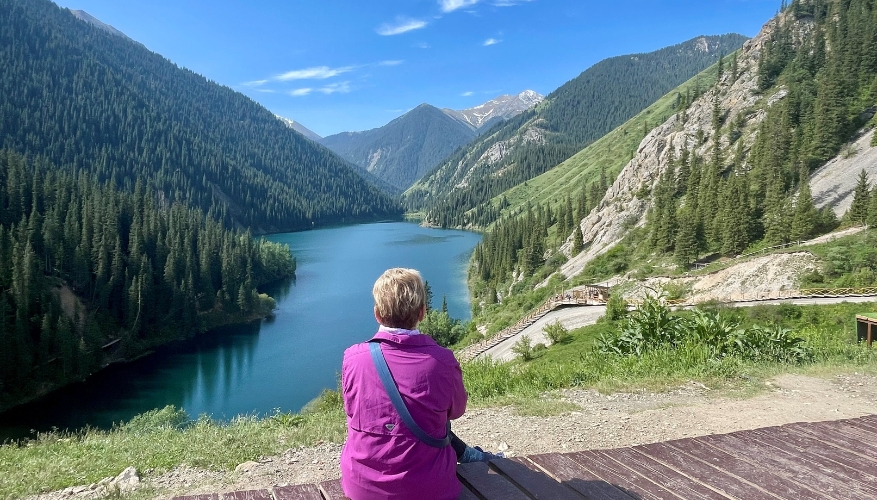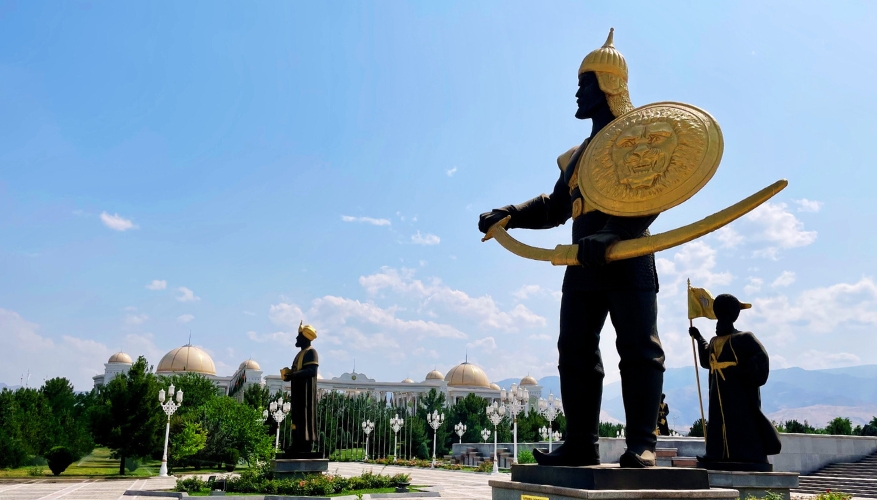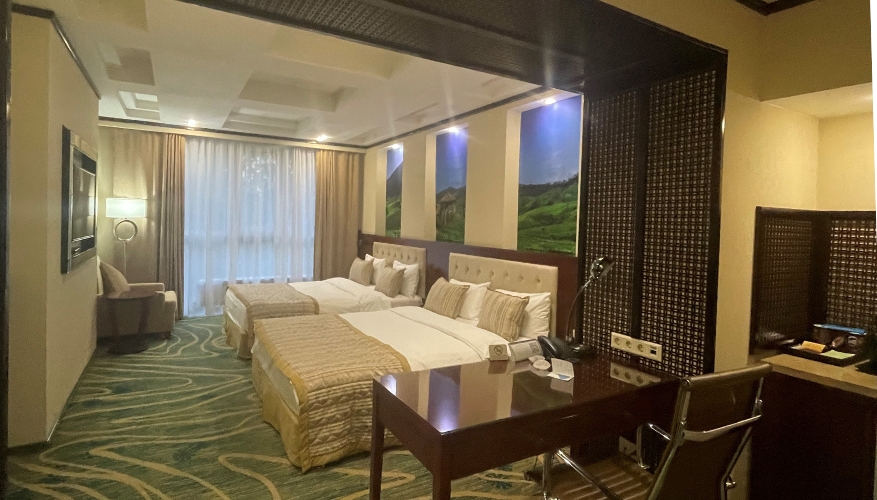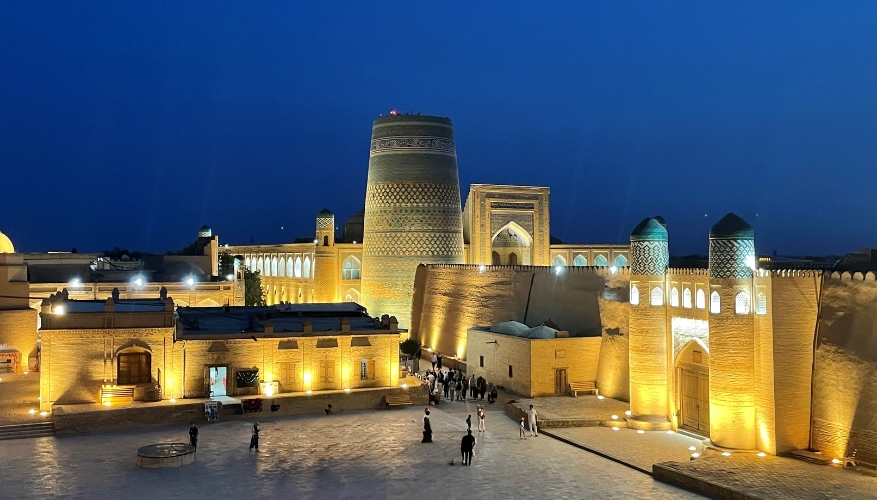Kymberly from our office has just returned from escorting a small group to The Stans and totally recommends it as a fascinating and unique destination unspoilt and waiting to be discovered.

The "Stans" refer to the five Central Asian countries ending in “-stan”: Kazakhstan, Kyrgyzstan, Tajikistan, Turkmenistan and Uzbekistan. The region is famed for its Silk Road heritage and ancient cities with histories that span across time who have been visited by famous figures like Marco Polo, Genghis Khan, Alexander the Great and more recently Joanna Lumley. Although these nations share historical, cultural and linguistic ties rooted in Turkic and Persian influences, they are all unique in their own right and all justify a visit. Each Stan has their own language and currency. Kazakhstan boasts vast steppes, oil wealth and lake areas as beautiful as Canada. Kyrgyzstan and Tajikistan are mountainous and popular for trekking, more rural and quainter than some of their neighbours. Turkmenistan is known for its gas-rich deserts and amazing white marble and gold capital city. Uzbekistan has the most monuments, with historical cities like Samarkand, Khiva and Bukhara showcasing an abundance of Islamic architecture. Together, the Stans offer a blend of nomadic traditions, Islamic culture and post-Soviet modernisation unlike any other travel destination.
Although not voluntary, all five became Soviet republics in the 1920s, officially forming part of the USSR until 1991 when Mikhail Gorbachev approved their independence. Despite their central Asian location, the locals are a congregation of Europeans, Russians, Middle Eastern, Turkish, Mongolian and Asian peoples. Everyone we encountered was friendly and helpful and at all times we felt totally safe. In all (except Uzbekistan) tourists are rare and we encountered locals wanting to have their photo taken with us, school children coming up to us asking where we were from and the locals were enthusiastic to show us their countries and culture. Along with western clothing, locals also wear colourful authentic traditional clothing in their everyday life. A scarf isn’t required, but covering shoulders and knees is considered respectful and although optional, we wore scarves when visiting shrines and places of worship.

The majority of our hotels were western with air conditioning and Wi-Fi (except Turkmenistan where WiFi / Google are not permitted). Breakfasts were often buffet style and featured a variety of hot and cold options. Transport in most cases was modern vehicles - VW and Mercedes vans. Some of the roads were bumpy and could be improved but we had no difficulty getting from place to place. Uzbekistan also has a high-speed train which travels 200 km/hour (like the bullet trains in Japan). All the cities we visited had wide streets, tree lined boulevards, parks, gardens, fountains and a surprising number of trees. Water is plentiful so they can grow anything. We saw all numbers of crops; rice, vegetables, forests, cotton, sunflowers, corn, potatoes, nuts, legumes, grains, fruits including citrus, grapes, melons and berries. There was an endless variety of produce being grown in the fields we passed – identifying what we were seeing was a fun pastime and the scenery was constantly changing. They also have domestic cattle, sheep, yaks (in the highlands), goats, horses and still produce silk (sericulture).

We ate at mostly modern restaurants. The cost of food and drinks was very affordable. They did have alcohol in most places – you could get beer, some wines, G&T, vodka etc but their hand-crafted fresh fruit and spice teas and artisan local lemonades were delicious. Occasionally we came across a “dry” restaurant where all drinks were non-alcoholic. Roadside service station stops sold the local versions of ice-cream, chips and lollies. Coffee was easy to come by, and upmarket places had espresso-based drinks to order. Credit cards could be used in some places but they preferred local currency.
On the subject of food there is nothing challenging or confronting about the food in The Stans. They eat lots of meat and vegetables / salads dishes. All loved bread, which is why it was served with every meal. Meat and/or vegetable soup are common accompaniments. You can get rice but is not served automatically with meals. The most Asian dish we encountered regularly was dumplings. Some places have naan and samosas which they claim was introduced to India from their region. There is not a lot of middle eastern dips in their diet, but they did often serve with meals a very mild sour cream. Food is eaten with western cutlery – not chopsticks. Everything is fresh – farm to table, nothing terribly spicy and servings are generous. Dessert was often fresh fruit but they do have cakes and puddings as well.
Palov (also spelled plov or pilaf) is the national dish of Uzbekistan and widely eaten across all the Central Asian Stans. It’s a hearty rice dish cooked in a kazán (large cast-iron pot) with meat, vegetables and spices considered a symbol of hospitality. Each place claimed their recipe the best and everyone had their own special family recipe. Palov is a communal dish, often cooked in huge quantities for weddings, holidays and gatherings. Palov is often served at lunch time and there are over 200 regional variations! We tried many across the five countries.
As well as food, traditional crafts and ancient cities you can also participate in an eagle hunting experience in Kyrgyzstan. We got to witness this ancient nomadic tradition where golden eagles are trained to hunt foxes, hares and even wolves. You can watch demonstrations and hold an eagle yourself. Another special activity the group got to do was to stay in a traditional yurt. Highly recommended for a one-night stay under the stars in the middle of nowhere as a special experience. Yurts are traditional circular tents, originally used by Central Asian nomads, but now adapted for eco-lodges. Staying in one can feel like a mix between camping and a cozy cabin. The circular space feels warm and inviting, with wooden lattice walls and a domed roof that often has a skylight for stargazing.
Uzbekistan has the most UNESCO-listed old towns giving the feeling of visiting a living museum full of stunning blue-tiled madrasas, mosques and minarets. Many have large pedestrian only areas and their buildings are specially lit up in the evening. The group discovered the magic of Uzbekistan, considered by many the jewel of the ancient Silk Road, through guided sightseeing of the breathtaking cities of Samarkand, Bukhara and Khiva, where turquoise domes, intricate mosaics and bustling bazaars bring history to life. During free time there were local markets to explore filled with handwoven silk, pottery and spices. Prices were reasonable – several members even brought home souvenir carpets.

For an off-the-beaten-path travel experience featuring awe inspiring nature, Silk Road Heritage culture, traditions and nomadic hospitality speak to Kymberly about visiting this special part of the world yet undiscovered by the masses!
#CentralAsiaTravel